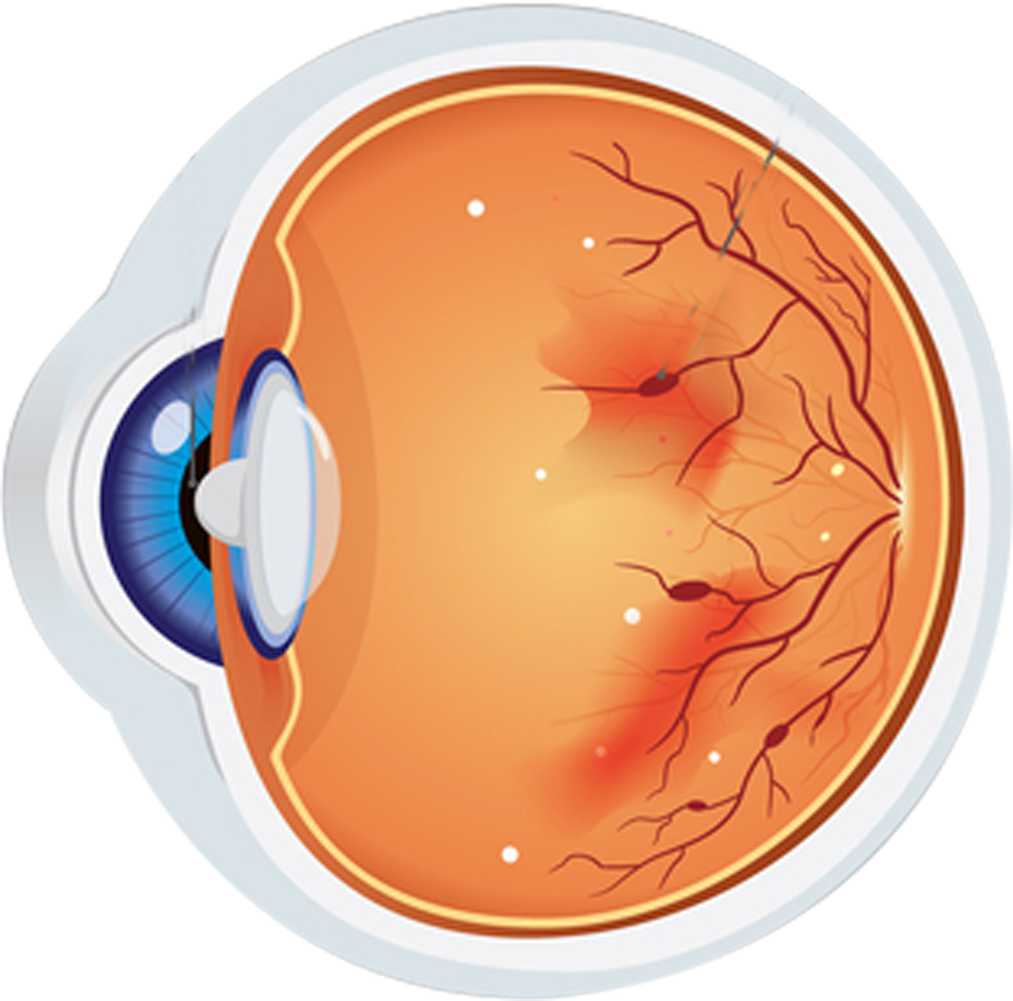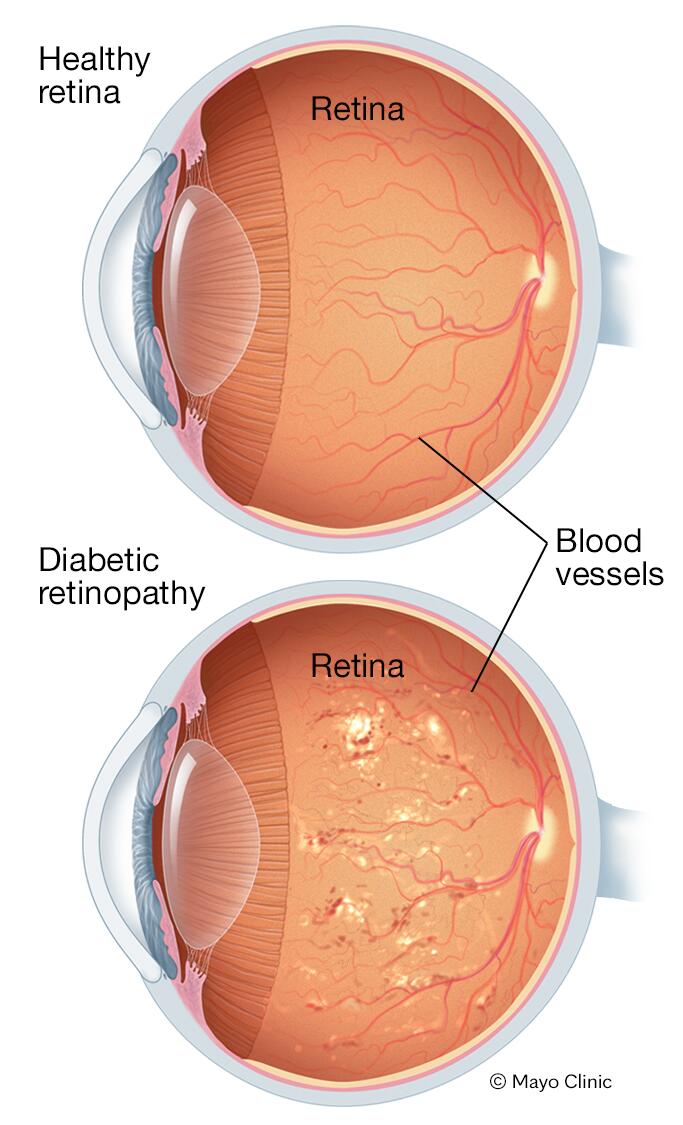Home > Specialties > Diabetic Retinopathy
Diabetic Retinopathy
Diabetic retinopathy is an eye condition, it is caused by diabetes that occurs due to damage to the blood vessels in the retina, the light-sensitive tissue at the back of the eye. When diabetes is not well managed, it can lead to high levels of blood sugar, which in turn can cause damage to blood vessels throughout the body including those in the retina.


Types of Diabetic Retinopathy
- Nonproliferative diabetic retinopathy (NPDR)- This is the early stage of diabetic retinopathy. In this stage, the tiny blood vessels of the retina leak and make the retina swell. This stage may not cause noticeable symptoms. but, it is important to detect and manage early to prevent progression.
- Proliferative Diabetic retinopathy (PDR)- The most advanced stage of diabetic eye problems. It starts when the retina starts growing new blood vessels. This is called neovascularization. These fragile new vessels often bleed into the vitreous. If they only bleed a little you might see a few dark floaters. If they bleed a lot, it might block all vision.
Symptoms of Diabetic Retinopathy
Diabetic Retinopathy symptoms can initially be asymptomatic, but individuals may experience:
- Blurred or fluctuating vision
- Floaters in eyes
- Difficulty in perceiving colors
- Flashes of light
- Difficulty seeing in the dark
- Sudden vision loss
- Redness and eye pain
- Gradually worsening vision
- Dark spots or empty areas in the visual field
Causes of Diabetic Retinopathy
Diabetic Retinopathy is Caused by:
- High glucose levels in the blood can damage the blood vessels in the retina.
- The longer someone has had diabetes, especially uncontrolled, the higher the risk of developing diabetic retinopathy.
- High blood pressure can exacerbate damage to the blood vessels in the retina.
- Abnormal levels of cholesterol and triglycerides can contribute to retinal vessel damage.
- Pregnant women with diabetes may experience accelerated progression of diabetic retinopathy.
- Both Type 1 and Type 2 diabetes can lead to diabetic retinopathy if blood sugar levels are not properly managed.
- Certain ethnic groups and genetic factors may predispose individuals to a higher risk of diabetic retinopathy.
- Smoking and Alcohol can exacerbate the progression of diabetic retinopathy.
- Poor Diet and Exercise – Lack of physical activity and a diet high in processed foods can worsen diabetes control and contribute to retinopathy.
- Medical conditions such as kidney disease can increase the risk of diabetic retinopathy.
Treatments of Diabetic Retinopathy
- Laser Photocoagulation: Diabetic Retinopathy Laser Treatment, known as photocoagulation, is often used to treat diabetic retinopathy. The laser seal leaks blood vessels and reduces abnormal blood vessel growth. This can help prevent further damage to the retina.
- Intravitreal Injections: Anti-VEGF (vascular endothelial growth factor) medications can reduce the growth of abnormal blood vessels and control swelling in the macula. These injections may be used for diabetic macular edema.
- Vitrectomy: In advanced cases of diabetic retinopathy where significant bleeding into the vitreous or retinal detachment, a surgical procedure for diabetic eye disease treatment called a vitrectomy may be performed. This procedure removes the vitreous gel and replaces it with a clear solution.
Modern Eye Care Hospital is a Center of Excellence for Eye Surgeries in Bihar
Address
Mogalkuan – Rahui Road 700m from, Basar Bigha Rd, Sohsarai, Bihar Sharif, Distt Nalanda, Bihar 803118
Call Us
(+91) 9308462602
Mail us
moderneyecare.in@gmail.com
